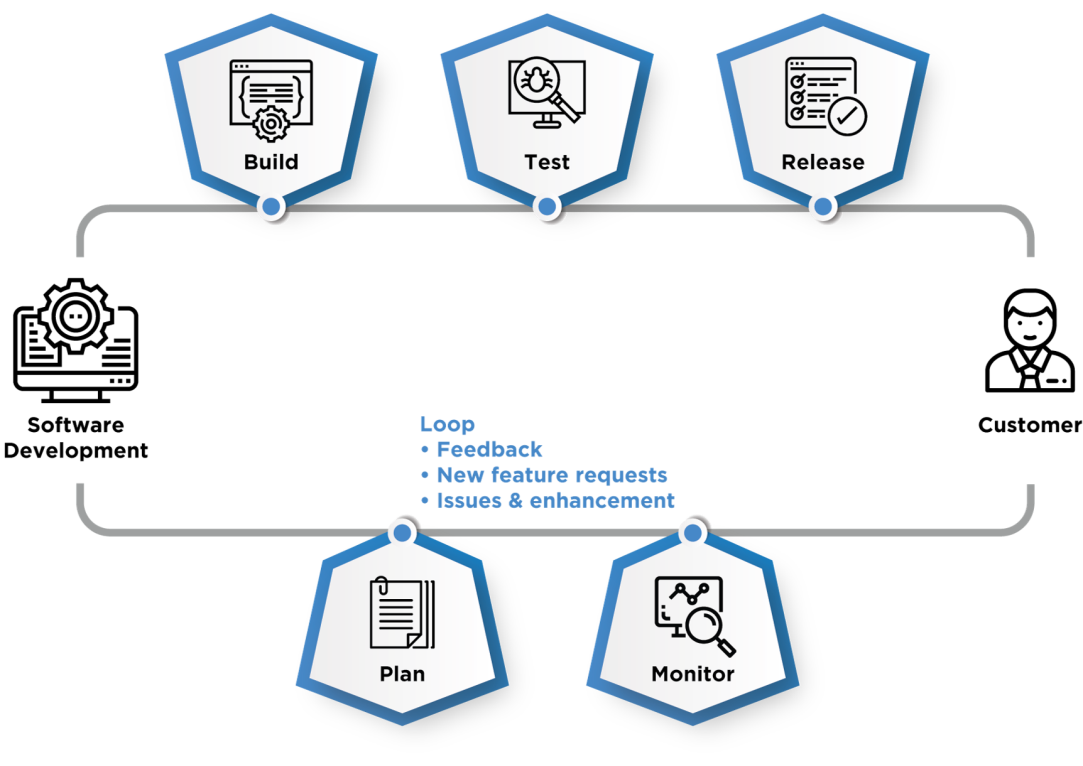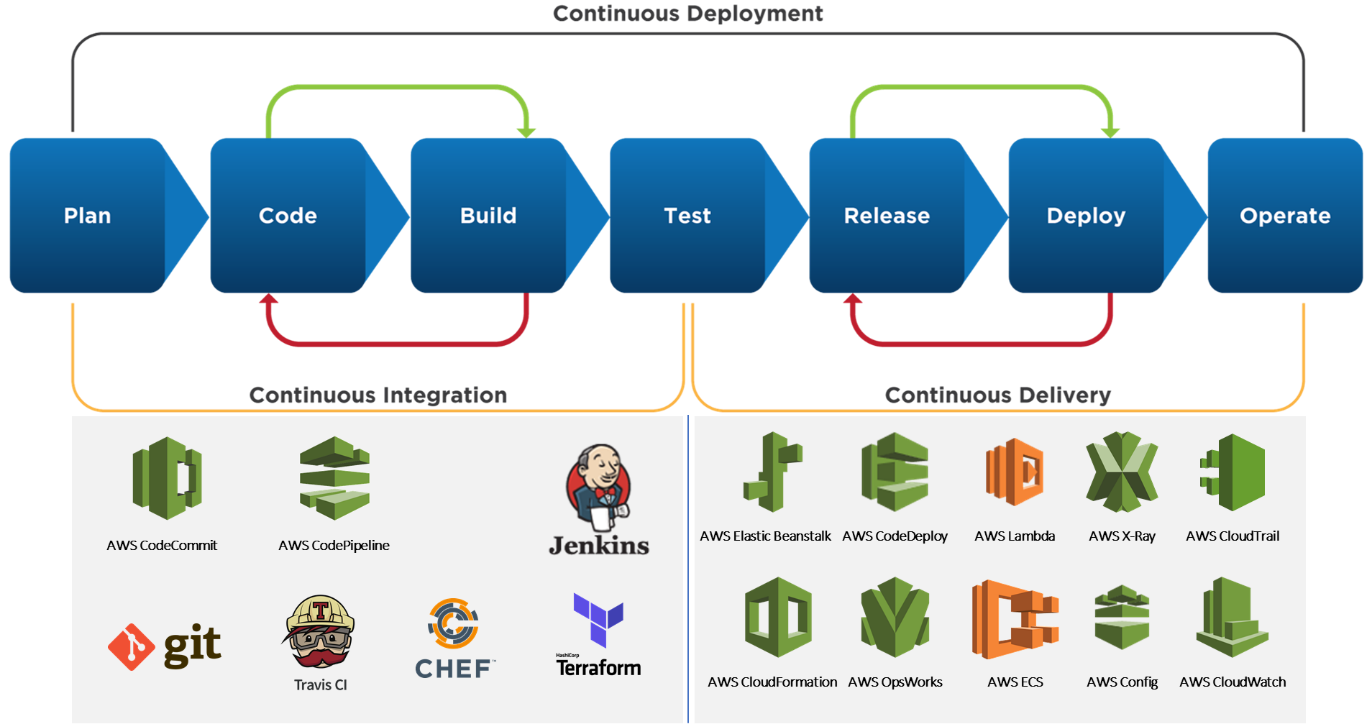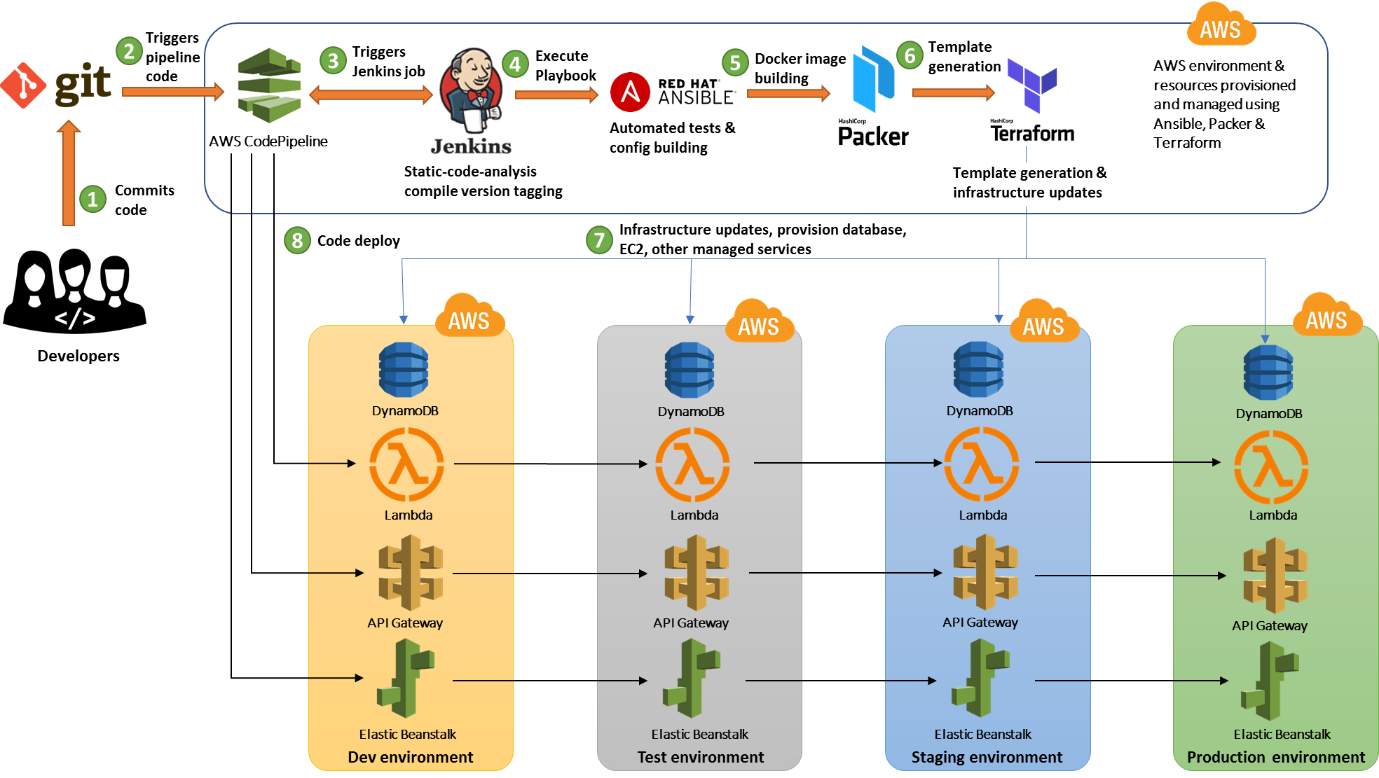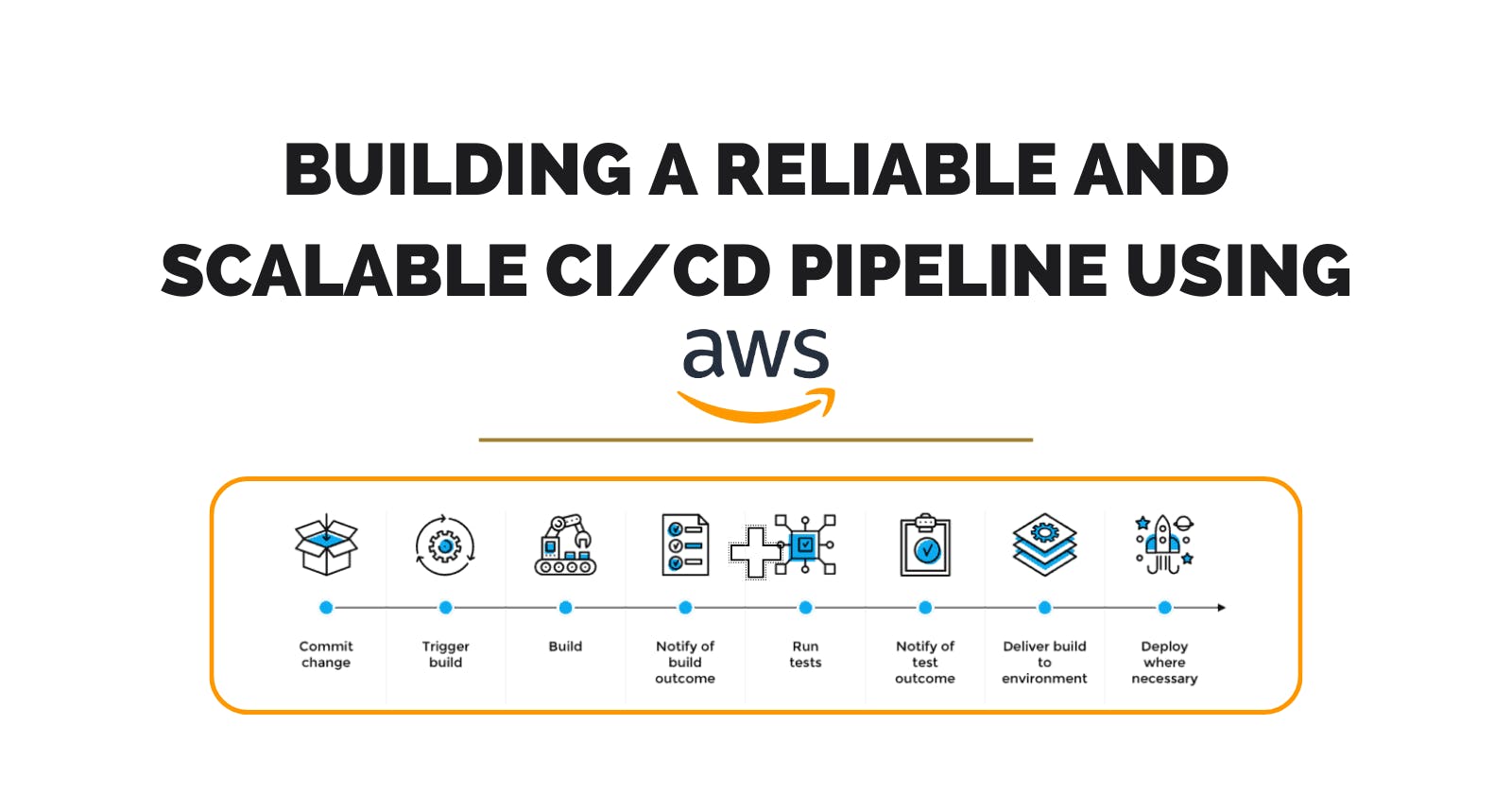Amazon and DevOps are intertwined, utilizing various tools and methodologies to facilitate a streamlined CI/CD pipeline.
Why Is Securing the Pipeline Important?
CI/CD stands for Continuous Integration/Continuous Delivery, which is the process of automating the tasks of software development. Securing CI/CD is a multi-stage process that is designed to identify and mitigate potential risks at different stages of the CI/CD. There are some stages in the CI/CD pipeline such as source code maintenance, build, testing, and deployment. Each of these stages is vulnerable unless we implement a solid risk mitigation system. If we add feature branches to the "picture," then it certainly adds more risk vulnerability to the pipeline. As such, securing the CI/CD process across all the tools and at every stage of the pipeline should be a top priority for every organization. No matter what tools you are using to secure the pipeline, make sure you mitigate all potential risk factors for the path code takes as it moves across the pipeline.
What Is DevOps?
Large-scale and highly elastic application services come with a requirement of automatic validation, infrastructure upgrading, development and deployment, quality assurance, and infrastructure administration. Traditional infrastructure management is being replaced by building CI/CD pipelines for all phases of the product development life cycle.
DevOps is a union of software development and operations. It is a culture that the company evolves from the Agile development process. The new methods of Continuous Integration, Continuous Delivery, and Continuous Deployment have come with the rise of DevOps that focuses on:
Communication, collaboration, and cohesion between teams
Applying best practices for change, configuration, and deployment automation
Delivering solutions faster
Monitoring and planning high-speed product updates

Figure 1: DevOps Model
CI/CD gets rid of the manual gate and implements fully automated verification of the acceptance environment to determine whether the pipeline can continue to production or not.
Continuous Integration focuses on the software development cycle of the individual developer in the code repository. This can be executed multiple times in a day with the primary purpose of enabling early detection of integration bugs, tighter cohesion, and more development collaboration. Major activities are static code analysis, unit tests, and automated reviews.
Continuous Delivery focuses on automated code deployment in testing, staging, or production environments, taking the approval of updates to achieve an automated software release process, and pre-emptively discovering deployment issues.

Figure 2: DevOps Phases
Benefits of DevOps
Improved collaboration, operational support, and faster fixes
Increased flexibility, agility, and reliability
Infrastructure security and data protection
Faster maintenance and upgrades
Transformation of projects with digitalization strategies
Increase speed, the productivity of a business and IT team
AWS CI/CD Pipelines
AWS provides a set of developer tools that can be used to achieve DevOps CI/CD in a fully secure, scalable, maintainable, and easy integration environment with existing CI/CD tools like Ansible, Chef, Puppet, Terraform, etc.
AWS provides CI/CD for Virtual Machine or container-based services, along with options to manage (create, update, and delete) all other services like databases, storage, compute, machine learning, etc.

Figure 3: AWS CI/CD Tools
AWS Services for DevOps Integration
AWS provides a bundle of DevOps services designed to enable organizations to build and deliver their products faster and reliably. These services simplify the process of provisioning and managing the infrastructure, automating the software release processes, and monitoring the applications and infrastructure performance.

Figure 4: Sample Pipeline using AWS and other CI tools
AWS provides the services that can help your organization practice DevOps in a more efficient way. We will discuss some of the important tools here. These tools can be categorized based on their roles into different sections as depicted in the following section.
Infrastructure as Code
Treat infrastructure the same way the developer treats the code with all best practices and tests. AWS provides a DevOps-focused way of creating and maintaining infrastructure. Some of the Infrastructure as Code tools are:
AWS CloudFormation: This provides the facility to prepare templates for infrastructure and services. Templates can be written in JSON and YAML and can be managed with versioning. These templates can be executed on Jenkins or any other CI server with AWSCLI. Terraform provides an option for AWS Resource Manager with rich controls and extension with state management.
AWS OpsWorks: This provides even more levels of automation with additional features like integration with configuration management software (Chef) and application lifecycle management.
AWS Config: AWS Config is an audit tool to monitor existing AWS account resources and triggers an alarm upon any change in infrastructure.
Continuous Deployment
Continuous Deployment is the core concept of a DevOps strategy. Its primary goal is to enable the automated deployment of production-ready application code. Following are the CI/CD tools provided by AWS:
AWS CodeCommit: A secure, highly scalable, managed source control service that hosts private Git repositories
AWS CodeDeploy: Features provide the ability to deploy applications across an Amazon E2C fleet with minimum downtime, centralizing control and integrating with your existing software release or continuous delivery process. There are third-party tools like Claudia and Serverless which deploys AWS Lambda and Elastic Beanstalk.
AWS ElasticBeanstalk: This supports automation and numerous other DevOps best practices including automated application deployment, monitoring, infrastructure configuration, and version management. Application and infrastructure changes can be easily rolled back as well as forward.
AWS ECS: Highly scalable and secure container service to store Docker images
AWS CodePipeline: This is a continuous delivery and release automation service that aids smooth deployments. Design development workflow for checking in code, building the code, deploying your application into staging, testing it, and releasing it to production.
Automation and Monitoring
Automation and monitoring focuses on setup, configuration, deployment, and support of infrastructure and applications. Communication and collaboration are fundamental in a DevOps strategy. To facilitate this, AWS provides flexible tools. We are listing here some of the frequently used ones:
AWS CloudWatch: Monitors all AWS resources and applications in real-time; Provides metrics for managed services to design dashboards, alarms, and triggers
WS XRay: Records and tracks the communication between all services and detects the issues in performance and application permission
AWS CloudTrail: Enables governance, compliance, operational auditing, and risk auditing
In order to make the cloud software solution journey smooth, efficient, and effective, one must follow DevOps principles and practices. DevOps has become an integral part of any cloud solution in today’s technology world. Many organizations offer DevOps as a service to automate your product delivery lifecycle to improve collaboration, monitoring, management, and reporting. It helps to accelerate new services through CI/CD to achieve operational flexibility, cost-effective ways of delivery, and avoid issues in production.
Takeaways
CI/CD security is a necessity for organizations to build and deploy applications in a reliable, efficient, and secure way. The strategies and practices described in this article lay a strong foundation for securing CI/CD pipelines. Nonetheless, achieving a scalable and secure pipeline is a continuous process that requires you to go beyond the basics of business flow. We would like to recommend a few next steps that would help you to implement the discussed solution.
Training and assessment: Regularly educate and train development and DevOps teams on emerging security best practices.
Security audits: Make it a schedule to perform security assessments for your CI/CD pipeline to detect and mitigate potential vulnerabilities or security risks.
Always be informed: Read up on the latest things on security trends, vulnerability reports, latest security patches, etc. that can keep your organization's software delivery process secure and reliable.
